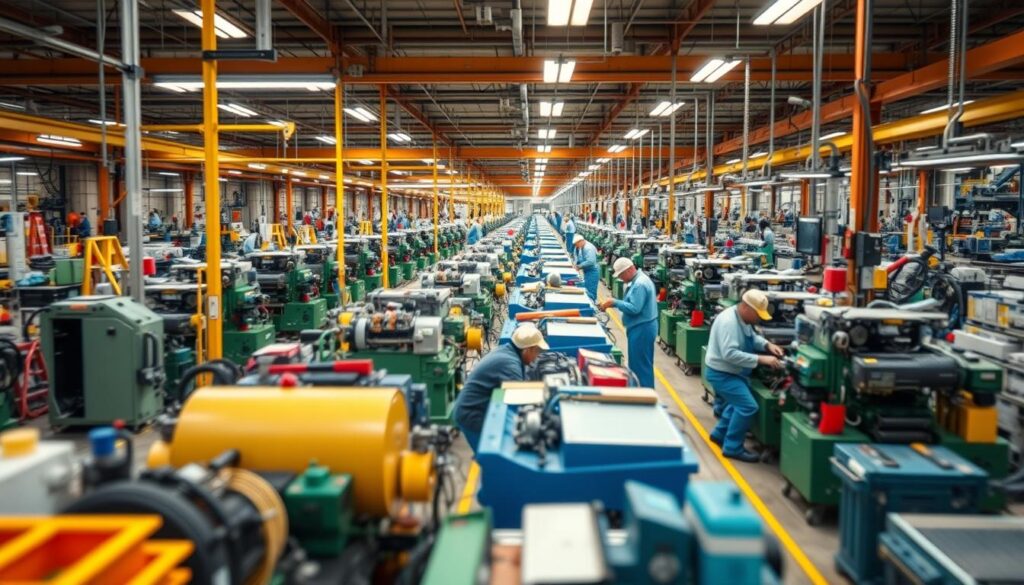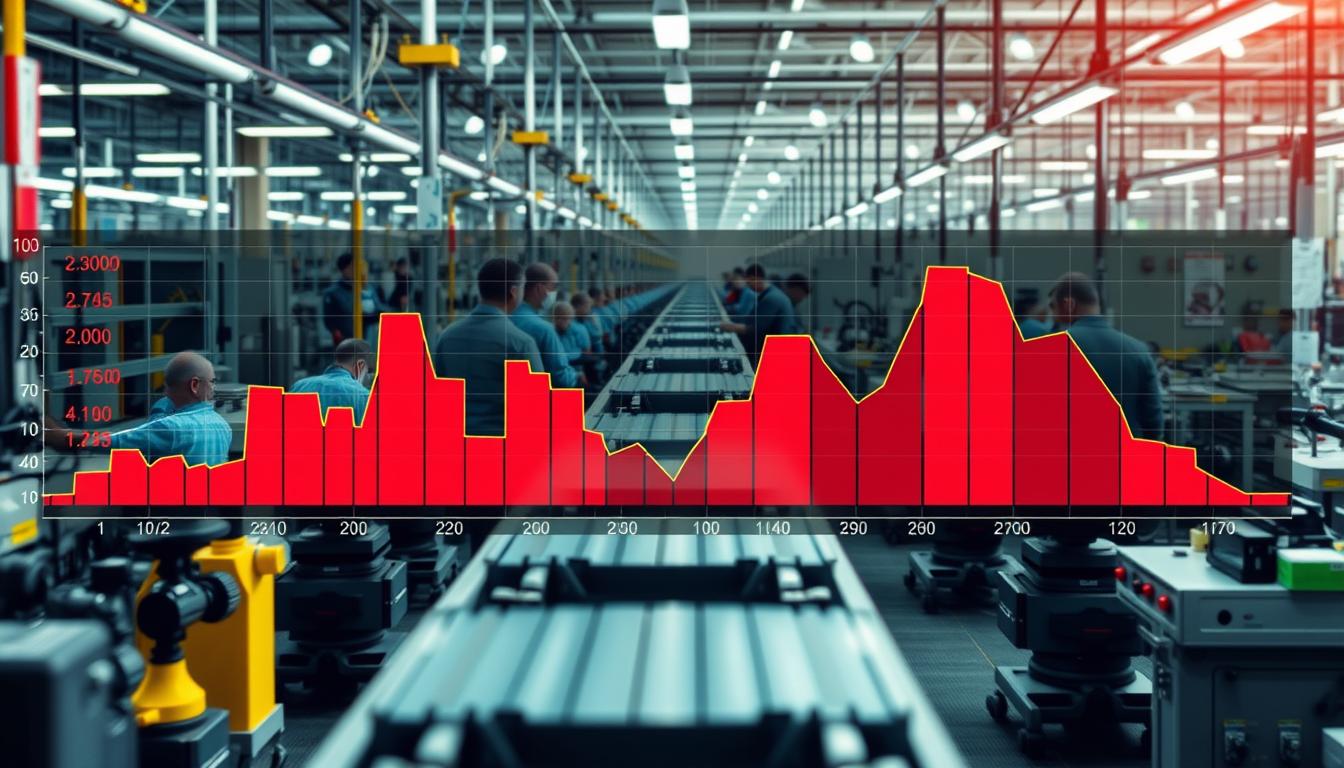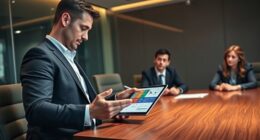Have you ever been in a factory, admiring the machines come to life? It’s a moment filled with pride for what’s possible within those walls. Yet, when numbers come into play, pride can quickly turn into confusion. You expect a certain number of products, but the actual results are different. This gap can raise questions about efficiency and costs. It’s then that production quantity variance becomes key to understanding these challenges.
In manufacturing, production quantity variance is more than just numbers. It’s a glimpse into your operation’s core. It measures the difference between expected and actual materials used. This metric is crucial for understanding manufacturing efficiency and managing costs. By knowing about production quantity variance, you can improve resource use. This can lead to uncovering savings and boosting your bottom line.
Key Takeaways
- Understanding production quantity variance is crucial for cost management.
- This metric evaluates the efficiency of your manufacturing processes.
- Favorable variance indicates production exceeds expectations.
- Monitoring material usage can help identify unnecessary costs.
- The formula for calculating variance provides essential financial insights.
- Effective variance analysis informs future production planning decisions.
What is Production Quantity Variance?
Understanding production quantity variance is essential for manufacturers. This measure is crucial for financial control and managing inventory. It helps in understanding cost management in manufacturing.
Definition and Importance
The definition of production quantity variance shows the gap between expected and actual material use. It highlights how well materials are used in production. Spotting this variance is key because it points out inefficiencies and areas to get better. This means businesses can fix problems, cutting down costs and waste. This boosts how well operations run. By improving production efficiency, businesses can increase their overall productivity and output without having to increase resources or expenses. This can lead to higher profits and a competitive advantage in the market. Identifying and addressing production quantity variances is essential for continuous improvement and sustainable success in the long run.
How It Fits in Overall Cost Management
Keeping an eye on production quantity variance is vital for managing costs. It helps businesses plan their budgets and forecasts better. This leads to knowing the real costs of production versus what was expected. Thus, companies can make changes to meet financial goals. Knowing about this variance aids in spotting trends, helping with long-term planning and using resources wisely.
| Aspect | Definition | Impact |
|---|---|---|
| Production Quantity Variance | Difference between standard and actual material usage | Indicates operational efficiency and cost-saving opportunities |
| Importance in Manufacturing | Highlights inefficiencies and areas for improvement | Enhances productivity and reduces waste |
| Cost Management | Integrates variance insights into budgeting | Improves financial planning and allocation of resources |
Key Factors Affecting Production Quantity Variance
It’s important to know what causes production quantity variance for good cost control. Key elements like how we use components, the price of materials, and how well we operate play a big role. These factors can change how much of something we make.
Component Usage Fluctuations
How much of each part we use can really change production quantity variance. If we make mistakes or aren’t efficient, we might use more or fewer parts than we planned. Keeping an eye on how we use parts can show us patterns that might need to be fixed.
Material Costs Variability
The cost of materials is crucial in figuring out production costs. Prices can go up or down because of changes in the market or problems with getting supplies. Knowing about these changes and dealing with them can make a big difference in making money.
Operational Efficiency
Being efficient is key to managing production quantity variance. If our processes aren’t streamlined, we might use too many raw materials. This can lead to not-so-good outcomes. It shows why it’s important to always be looking for ways to do better.

How to Calculate Production Quantity Variance
Learning how to figure out production quantity variance is key for managing costs well. By applying the variance formula, you spot the differences between actual production and what you expected. This leads to smart choices.
Formula for Calculation
Here’s the formula you need for figuring out production quantity variance:
Production Quantity Variance = Standard Cost of Component * (Standard Quantity Used – Actual Quantity Used)
This formula makes it clear how much material you used compared to what was planned. Say you aimed to use 500 units but only used 450. This math will show you how efficient your production is and where you might be wasting resources. Plugging in the correct numbers helps you see if your production plan works well.
Example Calculations
Let’s look at an example. Imagine your budget planned for making 100 items at $2 each, but you ended up making only 90. Here’s what you find:
- Standard Quantity Used: 100 units
- Actual Quantity Used: 90 units
- Standard Cost: $2
Using our variance formula, we can calculate the production quantity variance:
| Parameter | Value |
|---|---|
| Standard Cost of Component | $2 |
| Standard Quantity Used | 100 units |
| Actual Quantity Used | 90 units |
| Production Quantity Variance | $20 Favorable |
This example tells us that making fewer units than planned actually saved money. It points out the importance of managing production closely for the best efficiency.

Impact of Production Quantity Variance on Manufacturing Efficiency
Production quantity variance greatly affects manufacturing efficiency. It can directly impact your company’s profits. Understanding this impact helps in making smart decisions about processes and using resources wisely.
Link to Profit Margins
A higher production quantity variance can cause inefficiencies that hurt profit margins. When actual outputs miss the mark, costs might go up. This situation leads to smaller margins. Let’s say the expected labor hours for a product were 50, but it actually took 65 hours.
This negative efficiency variance is a red flag for productivity issues. On the flip side, using only 45 labor hours indicates a positive variance. This leads to cost savings and better profit margins. By paying attention to these variances, you can plan better and improve operations.
Effect on Inventory Management
For smooth production, managing inventory well is key. Production quantity variance can mess up inventory management. This might cause too much stock or not enough, slowing down production.
Overestimating what you need can overfill your storage, locking up funds. Underestimating can stop production due to a lack of materials. Managing these variances well makes your inventory strategy stronger. It ensures steady manufacturing operations.

Production Quantity Variance vs. Production Price Variance
Understanding differences in variance types is key to managing costs effectively. The production quantity variance shows the difference between actual and planned material use. Meanwhile, the production price variance focuses on how material costs compare to expected prices. This is vital for finding where your manufacturing might be losing efficiency.
Understanding the Differences
Sometimes, operational costs can seem too high. This is when you look at the production price variance. It tells you if material costs are way off from what you planned. By looking at financial reports, you can spot big variances that need fixing. An example would be a $2,931 difference in Assembly A’s costs.
When to Use Each Metric
If you’re using too many or too few materials, check the production quantity variance. A big variance, like with resource M0004, shows you’re not using materials well. It’s a sign to make your processes better. Understanding when to use each metric helps you improve manufacturing efficiency in specific ways.








